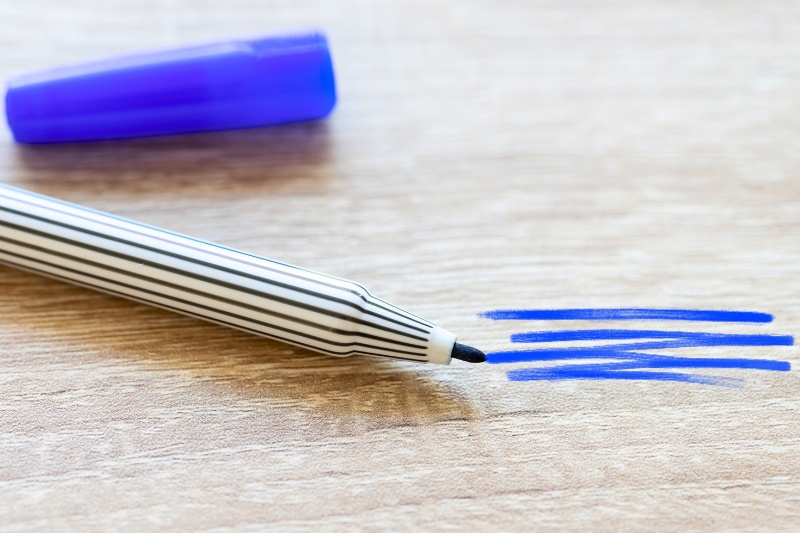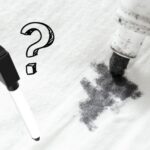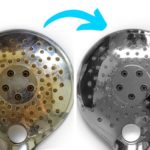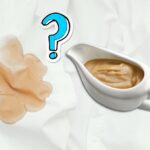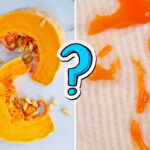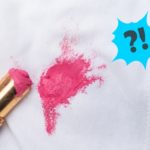Permanent marker is great for labelling lunch boxes, putting kids’ names on clothes tags, and writing on boxes when you’re moving house!
It’s not so good when it makes contact with the wrong kind of surface and ends up staining it!
Your initial thought may be to bin or replace the permanent marker-contaminated item. But this isn’t the only way you can handle the situation.
Believe it or not, you can remove permanent marker from several kinds of surfaces.
Follow the steps below to remove the unsightly marker blemishes from the surfaces in your home.
Tips to Consider When Removing Permanent Marker

Think about these points before you remove permanent marker off a surface:
- Always test your chosen cleaning method out first! A quick patch test will reveal whether or not the solution will damage or discolour your surface.
- Be patient! A permanent marker mark may not come off a surface in one swift move. So, be prepared to repeat a treatment more than once.
- When it comes to removing permanent marker, some methods will work better than others, so don’t worry if you have to swap between cleaning methods. (Just make sure you rinse the surface clean before moving on to a new treatment – you don’t want to cause any nasty chemical reactions!)
- Act as fast as you can because old permanent marker stains are hard to remove.
- Don’t dry permanent marker stains, as this makes them more difficult to eradicate.
- Wear protective gear when handling cleaning solutions!
How to Remove Permanent Marker from Soft Surfaces
Removing permanent marker from clothes
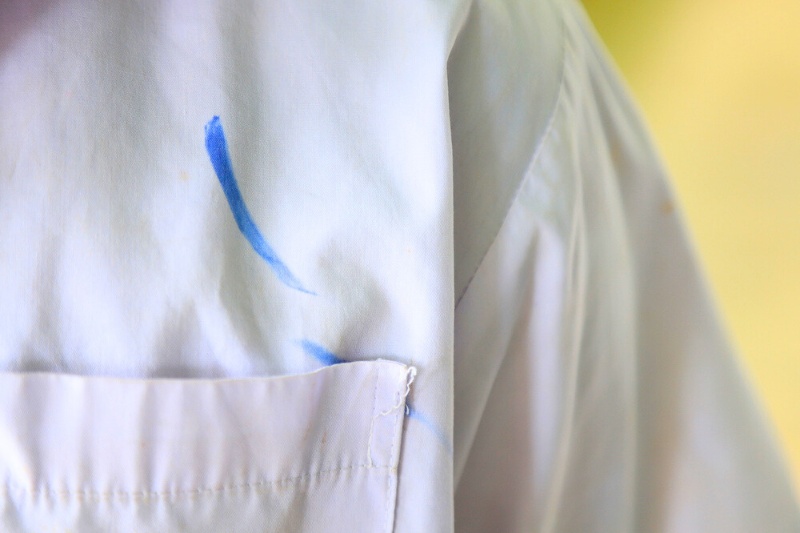
Option 1: Rubbing alcohol
Steps to follow:
- Pour a small amount of rubbing alcohol into a bowl.
- Dip a cotton wool ball/neutral-coloured microfibre cloth into the liquid.
- Wring the wool ball/cloth out.
- Gently blot the marker stain – when the cloth/wool ball gets dirty, grab another and continue this process.
- Repeat Steps 2 to 4 until you’ve removed the permanent marker stain.
- Launder the garment as usual.
- Do a final check at the end of the wash. Repeat this treatment if you still see stains.
Option 2: Bicarbonate of soda
Steps to follow:
- Grab a neutral-coloured cloth and soak it in cold water.
- Wring the cloth out.
- Gently blot the stained area with the moist cloth.
- Apply an even layer of bicarbonate of soda to the damp, stained area.
- Gently work the powder into the material using a soft toothbrush.
- Turn your garment inside out.
- Rinse the stain from the back so you flush it out through the front.
- Launder the item as usual.
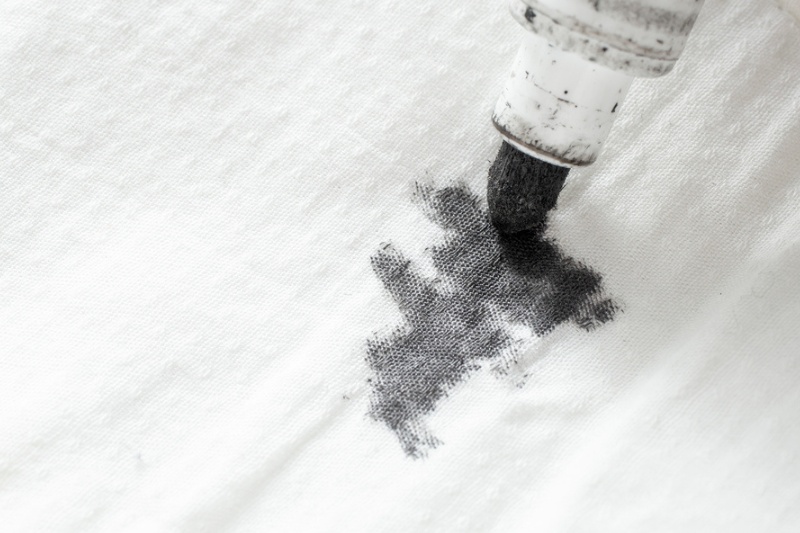
Option 3: Hairspray (containing alcohol)
Steps to follow:
- Blot the stained area with a damp, neutral-coloured cloth.
- Spray a small amount of hairspray onto the blemish (it must contain alcohol).
- Gently blot the marker stain with a damp cloth.
- Repeat Steps 2 and 3 until you remove the stain – use a new patch of cloth each time so you don’t reapply the marker to the material.
- Wash the item in cold water and with detergent.
Option 4: Lemon and salt
Steps to follow:
- Soak a neutral-coloured cloth in cold water.
- Wring it out and press it gently onto the stained area.
- Mix lemon juice and salt in a shallow dish to make a paste.
- Spread this paste over the permanent marker blemish.
- Wait about five to ten minutes.
- Grab a damp, neutral-coloured cloth and blot the area.
- Continue to blot the stain until it disappears.
- Wash the garment in a cold wash and with regular detergent when you’re finished.
Note: Only try this method out on white-coloured clothes, as the lemon juice may discolour colourful items (it’ll act like a bleaching agent).
Option 5: A specialised stain remover
In addition to the above, you can buy stain removers that can eradicate pen-related marks from clothes.
These products can generally remove stains created by pens, highlighters, crayons, and fountain pens.
These solutions, however, don’t always work on permanent marker stains! So, don’t be too disheartened if the product you buy doesn’t do anything!
Sometimes off-the-shelf cleaners aren’t strong enough to handle marker blemishes, so they have little effect on them.
Removing permanent marker from carpets
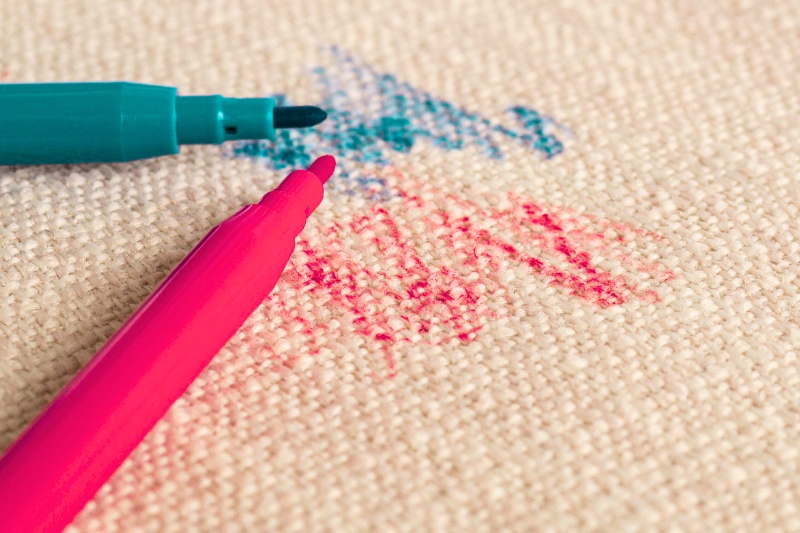
Option 1: Rubbing alcohol
Steps to follow:
- Fill a small bowl with rubbing alcohol.
- Dip a neutral-coloured cloth into the liquid.
- Wring out the excess liquid.
- Blot the stain on the carpet with the solution.
- Repeatedly blot the stain (use a new piece of cloth each time so you don’t reapply the dirt).
- Use a second dry neutral-coloured cloth to mop excess liquid from the carpet.
- Dab the treated area with a third damp cloth (just plain water) when you’re done to remove the waste solution from the surface.
- Allow the carpet to dry naturally.
Option 2: Hairspray (containing alcohol)
Steps to follow:
- Squirt a generous amount of hairspray onto the stained spot.
- Grab a damp, neutral-coloured cloth.
- Gently blot the hairspray into the carpet so that it can remove the stain.
- Repeatedly blot the surface until the blemish has gone.
- Dab the carpet with a second clean, damp cloth to remove any waste product from the surface.
- Allow the carpet to dry naturally.
Removing permanent marker from soft furnishings
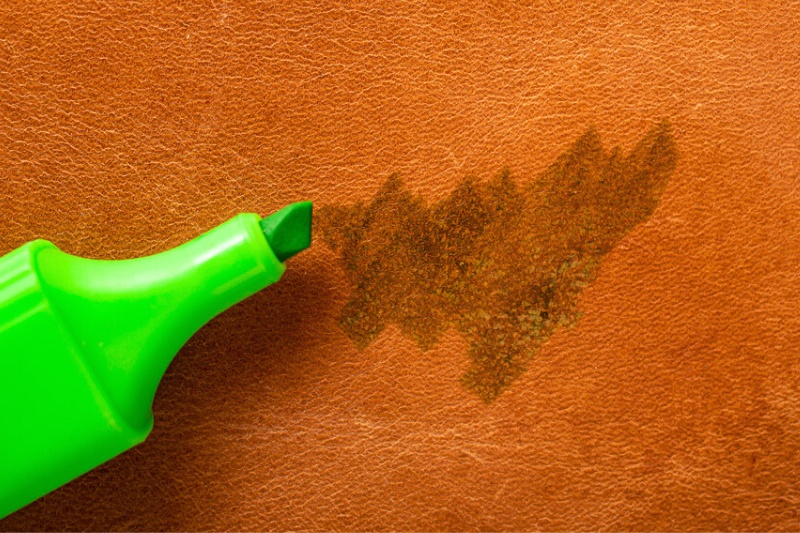
Option 1: Professional help
When it comes to treating permanent marker stains on sofas and chairs (large and often expensive items), it may be best to ask a professional cleaner for help.
A professional in this field will have extensive experience in dealing with these types of stains, and can use different kinds of tools and products to clean the blemishes away.
They should also be able to achieve all of this without compromising the rest of your furniture!
Option 2: An alcohol-based cleaner
If you’re happy to treat your soft furnishings, you can use an alcohol-based cleaner to remove the permanent marker from the surface.
However, you do this at your own risk because you may end up discolouring your soft furnishings in the process.
To give this a go, just pop some cleaner (rubbing alcohol/hairspray) on a neutral-coloured cloth, then blot this cloth onto the stain.
As you dab at the fabric, you should notice the cloth changing colour as the stain is lifted off the material.
You’ll need to continuously blot the area for several minutes.
When the marker is gone, you’ll need to dab the whole area with a damp cloth to remove excess product from the surface. You can then leave the soft furnishing to dry naturally.
Tip: Don’t wet soft furnishings too much, as they can take a while to dry! So, stick to damp cloths and as little liquid as possible!
How to Remove Permanent Marker from Hard Surfaces
Removing permanent marker from plastic

Option 1: Alcohol/acetone cleaner (nail varnish remover, hairspray, and hand sanitiser)
Steps to follow:
- Pop one cleaner of your choice onto a neutral-coloured microfibre cloth.
- Rub the solution into the plastic surface to remove the stain.
- Repeat Step 2 until the entire stain has been removed from the plastic surface.
- When you’re done, wipe the whole area with a clean, damp microfibre cloth to remove any residue from the surface.
Option 2: Magic eraser
Steps to follow:
- Dip a corner of the magic eraser into some water.
- Gently rub the stained areas on the plastic with the eraser – use circular motions.
- Continue to rub the surface so the permanent marker comes off.
- Wipe the plastic surface with a damp cloth when you’re done.
Option 3: Whiteboard marker
Steps to follow:
- Grab a whiteboard marker pen (preferably black).
- Write over all the permanent marker marks with the whiteboard marker.
- Make sure you go over every letter, dot, and line!
- Wait a couple of minutes.
- Grab a damp cloth and wipe the whole surface down.
- Repeat the steps above if necessary.
- If you need to remove any tricky bits, dip a cloth in some distilled white vinegar and rub the surface.
Removing permanent marker from wood
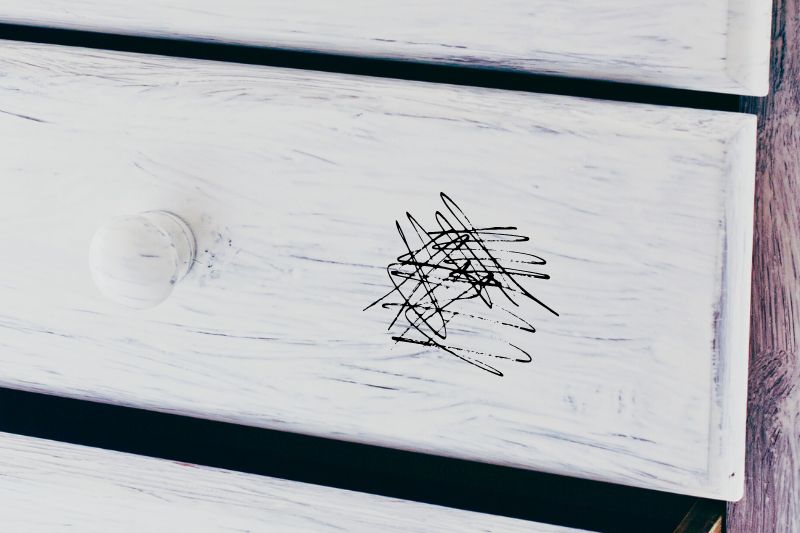
Option 1: Toothpaste and bicarbonate of soda
Steps to follow:
- Find out which way the grain is going on the wood – you need to rub with the grain.
- Mix bicarbonate of soda with some white toothpaste (no gel) in a shallow dish to create a paste.
- Dip a microfibre cloth into the paste.
- Spread the paste over the marker-stained wood.
- Carefully massage the wooden surface.
- Repeat the steps above to remove the entire stain.
- Wipe the surface with a damp cloth when you’re done.
- Use a second soft cloth to dry the surface.
Option 2: Magic eraser
Steps to follow:
- Pop a blob of oil onto a magic eraser.
- Gently rub the magic eraser on the stained region – repeat this step until the mark disappears.
- Wipe the surface with a clean cloth when you’re done.
Note: This may damage the surface. So, remember to treat the wooden surface when you’re done to protect it for longer.
Option 3: Rubbing alcohol
Steps to follow:
- Put a little rubbing alcohol on a microfibre cloth.
- Blot the stain with the cloth/gently rub in circular motions.
- Repeat the steps above until you remove the marker blemishes from the surface.
- Wipe the area with a damp cloth to remove residue from it.
Note: Don’t get the wood too wet!
Removing permanent marker from walls, tile and metal
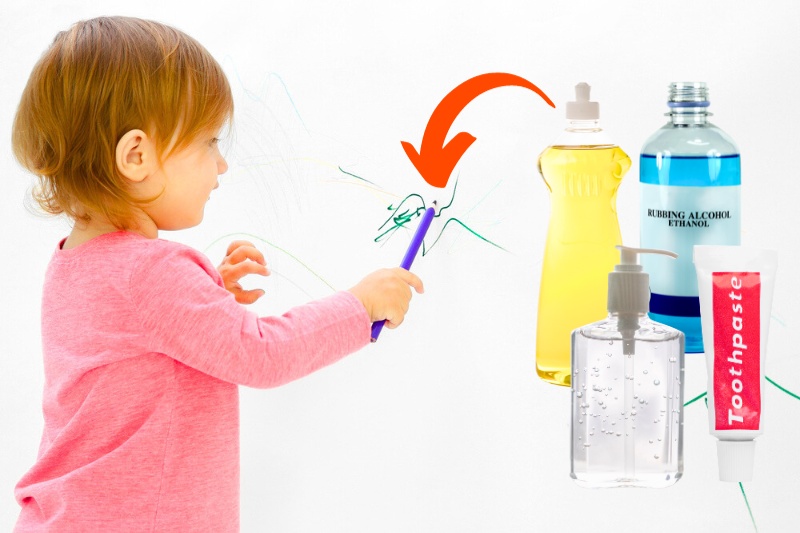
Tip: Don’t rub walls too hard because you’ll remove the paint from them!
Option 1: Toothpaste
Steps to follow:
- Pop some white-coloured toothpaste on a neutral-coloured microfibre cloth.
- Massage the toothpaste into the stain.
- Grab a soft toothbrush and work the paste into the stain.
- Wait a few minutes.
- Use a damp cloth to remove the toothpaste from the hard surface.
- Repeat the steps above if the stain is still present.
Option 2: Hand sanitiser (must be clear) or rubbing alcohol
Steps to follow:
- Fill a shallow bowl with some colourless hand sanitiser (it must have a high alcohol content) or rubbing alcohol.
- Dip a cotton wool ball into the sanitiser/rubbing alcohol.
- Rub the hard surface with the wool ball.
- When the wool ball gets grotty, grab another and repeat the steps above.
- Repeat Steps 2 to 4 until the whole stain has been removed.
- Wipe the whole surface down with a damp cloth to remove any solution from it.
- Leave the surface to dry naturally.
Option 3: Warm soapy water
Steps to follow:
- Fill a bowl/bucket with warm water.
- Add a few blobs of washing-up liquid to the water.
- Stir the water.
- Dip a neutral-coloured microfibre cloth into the soapy water.
- Wring the cloth out.
- Wipe the stained area clean.
- Allow the surface to dry naturally when you’re done treating it.
Tip: Combine this method with another if the stain doesn’t disappear immediately!
Removing permanent marker from whiteboard
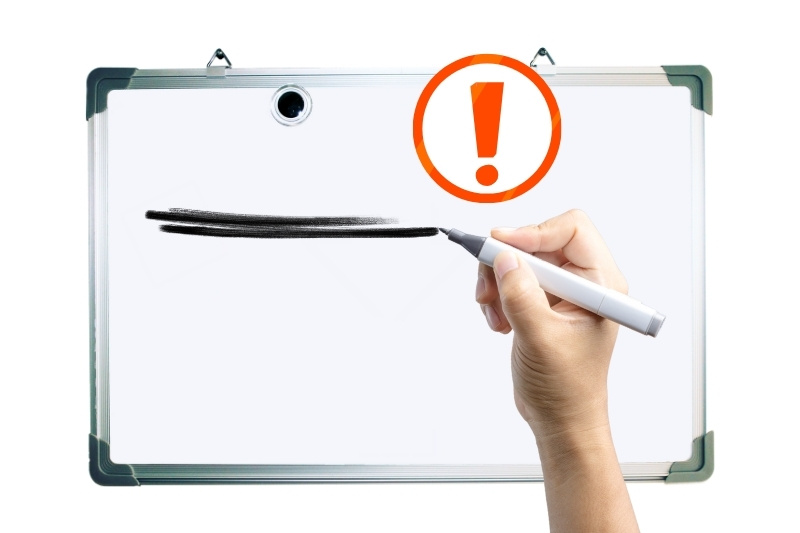
Option 1: Rubbing alcohol
Steps to follow:
- Pour a small measure of rubbing alcohol into a shallow dish.
- Dip a cotton wool ball into the liquid.
- Wring the ball out.
- Gently rub the marker stain on the whiteboard.
- When the cotton wool ball gets dirty, grab a fresh wool ball and repeat the steps above.
- Repeat Steps 1 to 5 until you’ve removed the permanent marker from the whiteboard.
Option 2: Alcohol-lined hand sanitiser (must be clear)
Steps to follow:
- Squirt some hand sanitiser onto a microfibre cloth.
- Blot the marker blemish with the cloth.
- Continuously blot the mark until it disappears – use a new patch of cloth each time you rub and add more sanitiser if need be.
- Wipe the whiteboard down with a cloth at the end to remove residue.
Option 3: White vinegar
Steps to follow:
- Fill a shallow bowl with distilled white vinegar.
- Dip a microfibre cloth into the liquid.
- Wring the cloth out.
- Gently wipe the permanent marker stains off the whiteboard using the damp cloth.
- Repeat the steps above until the stain disappears.
Option 4: Toothpaste
Steps to follow:
- Pop a blob or two of white toothpaste on a damp microfibre cloth.
- Rub the paste-filled cloth all over the permanent marker stain.
- Continuously rub the stain until it starts to lift off.
- Repeat the steps above until you remove the whole blemish.
- Wipe the whiteboard with a damp cloth to remove the excess paste when you’re finished.
Note: The toothpaste must be white in colour and cannot be of gel variety.
Option 5: Bicarbonate of soda
Steps to follow:
- Mix equal parts of bicarbonate of soda with plain water in a shallow dish to create a bicarb paste (adjust measurements to suit the size of the marker stain).
- Spread the paste all over the marker stain.
- Wait about five to ten minutes.
- Grab a microfibre cloth.
- Soak the cloth in some water and wring it out.
- Wipe the paste off the surface.
- Repeat the steps above if the stain is still present.

Bethan has a passion for exploring, reading, cooking and gardening! When she’s not creating culinary delights for her family, she’s concocting potions to keep her house clean!
